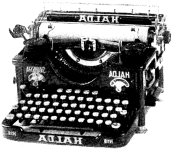You can charge forward, charge a battery, charge someone with a responsibility (and then they’re in charge of it), or charge them with a crime (which might lead to them being in charge of nothing at all for a period of time), and if you’re hungry you can charge a meal by using a credit card. If you’re running a taco truck, you can decide what to charge for that meal. But that’s only nowadays. Five centuries ago you could “with spuris charg” your war horse. Even longer ago you could “charge schippes,” which meant you were loading them with cargo. You might also have “ten mules charged with large hampers.”
If it happened to be you yourself trying to carry the hampers, you might decide “it was a thynge impossible to charge, they were of soche gretnesse and wight.” Or it might be even more personal: “the trembling tears that charge they melting eyes,” or “the water with which the rock is charged” (I’m not 100% sure what that last one even means).
But wait, there’s more. Loading a gun or cannon used to be called “charging” it (“when any Piece of Ordnance is Charged with such as shot as will not be driven home unto the Powder”). And if you happened to have a coat of arms, you might associated one symbol with another one, and that was called “charging” it — so you might have lion “charged with an arrow” or something like that. Heraldry is ridiculously complicated and has its own lexicon.
it wasn’t just guns or ships that could be charged; any kind of substance, like air or water, might be “charged with” something else. The air around a fire might be charged with smoke, or the water might be charged with the salt you just spilled in it.
Like a lot of words that have had different meanings in different eras, “charge” has been around for a long time. It first showed up in Middle English, and probably came from Old French — except that Spanish, Portuguese, Italian, and Latin had similar words around that time too, so it could even have been adopted from more than one source. We don’t use most of the meanings it’s had, but there have been more than 35 of them.
But wait, there’s more. So far I’ve only been talking about the “charge” that’s a verb. There also a noun, and it’s even older — although not by a great deal. The noun version is mostly paired with the verbs, so if you “charge” a ship (or a mule) with a load, that load is “the charge.” By the 1700s, an age when measuring things was all the rage, a “charge” became a specific unit of weight. “A charge of Lead is 36 Pigs, each containing six Stone wanting two Pound.”
You could charge your firearm, and eventually the particular amount of powder and shot you used became a “charge” — down at the gun shop you could purchase “ten charges,” for example. This was before mass production of ammunition, so each “charge” was probably calculated for whatever gun you might have. If you then hit a target particularly accurately, you might get a “charge” out of it — that is, you felt excited.
You wouldn’t feel excited if your horse got sick though. If it got a scrape or cut you’d apply a thick “plaster” or bandage — which was called a “charge” back in the 1600s. And it gets even more obscure; in the 1500s a “charge” was “an item which an intromittor receives and holds for the benefit of a beneficiary.” It’s not very clear exactly what an “intromittor” was; all the examples are things like this: “The schyreffes, baillies..and uther intrometers with His Majesty’s rentes.” So, something like an agent, perhaps.
So I’ll charge you with this: charge ahead and use “charge” in as many ways as you can today.
